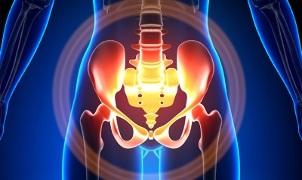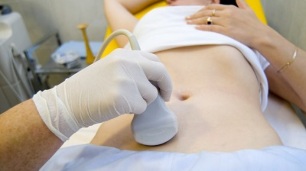
This disease is poorly understood, although several thousand observations have been described with diagnosis and subsequent treatment.
The multitude of diversity and non-specificity of the clinical picture of varicose veins of the small pelvis leads to gross errors in diagnosis, which in the future affects the consequences.
Characteristics of small pelvic varicose veins
The pelvic veins are several times longer than the arteries, which leads to their higher capacity. This is due to the phylogeny of the vascular system of the pelvic region. The pelvic veins are very adaptable and potentially prone to rearrangement, which contributes to the creation of a densely intertwined network.
The speed and direction of blood flow are controlled by valves that are controlled by complex humoral mechanisms. Valves balance the pressure in different parts of the venous network.
When the valves stop performing their functions, blood stagnation develops, which leads to vascular pathology and the formation of varicose veins. The uniqueness of the pelvic veins lies in the fact that the wide ligaments of the uterus, which keep the lumen of the vessel wide, can narrow, causing pathology.
Causes
Pathological dilatation of the pelvic vein may be due to the following reasons:
- Drainage disorder;
- Obliteration of the vein trunk;
- Compression of collateral logs by altered uterine position, for example, in retroflexion;
- ovarian vein valve insufficiency (congenital or acquired);
- Obstructive postphlebitic syndrome;
- Connective tissue pathology;
- Arteriovenous angiodysplasia;
- Prolonged sitting, hard physical work;
- Varicose veins of the lower extremities;
- Pregnancy (3 or more) and childbirth (2 or more);
- Diseases of the female genital area (chronic salpingo-oophoritis, ovarian tumors, uterine fibroids and genital endometriosis);
- Adhesion of pelvic organs;
- Obesity.
Classification by degree of disease
The following stages differ in the size of the varicose vein:
- up to 0, 5 cm, "artificial" flow of the vessel;
- 0, 6-1 cm;
- more than 1 cm.
Disease course variants
- varicose veins of the perineum and vestibule of the vagina;
- small pelvic venous congestion syndrome;
Symptoms
- Most common - frequent pain in the lower abdomen, perineum after prolonged static and dynamic stress. The pain intensifies in the second phase of the cycle, after hypothermia, fatigue, stress, worsening of various diseases.
- Feeling "out of place", pain during and after sex.
- Dysmenorrhea - menstrual irregularities, including pain.
- Secretion, more than normal, gland of the genital tract.
- Blood stagnation leads to infertility, miscarriage, miscarriage.
- Violation of urination due to dilation of bladder veins.
Diagnostics
Diagnosis of the disease only on the basis of complaints is successful in only 10% of cases.
Palpation of the inner walls of the pelvis allows you to feel the oblong seals and venous nodes. When looked in the mirrors, cyanosis of the vaginal mucosa is visible.

The selected procedure is ultrasound examination with color Doppler mapping, which enables the detection of not only varicose ovarian veins, but also venous thrombosis, postthrombophlebitic blockages. Ultrasound shows tortuosity, "worm-like", structures without signal reflection, localized on the lateral surface of the uterus.
The Doppler effect is based on the "shade" of blue, ie red, venous and arterial blood.
The device for ultrasound examination with the help of a special program detects the movement of blood from the sensor in the other direction, calculates the speed of blood flow and the type of vessel.
But the exact definition of a vein or artery remains with the doctor. The Doppler method works in almost all cases, exceptions to the rules are dictated by our body, because the blood flowing from the heart is not always arterial and vice versa.
So, the doctor of ultrasound diagnostics sees this arterial or venous vessel, its size, the speed of blood flow in it and many indicators that are not needed by an ordinary person, but play an important role in making the diagnosis. Transabdominal and transvaginal sensors are used for this.
In 5. 7% of cases, the disease is accidentally recognized during screening. Usually the diameter of the varicose vein is 0. 4 cm.
CT and MRI are very accurate. These methods can detect accumulations of varicose veins in the ligaments of the uterus, ovaries and around these organs. It is possible to determine the concomitant pathology.
A very reliable method is phlebographic research.
Contrasting is done at the level of the Valsalva test, in relation to the blood flow. This allows you to see exactly the valve failure.
Left X-ray, renal phlebography, superselective phlebovarioscopy and phlebovariography on both sides are also used. These methods make it possible to determine hemodynamic and anatomical changes in the renal veins and the places where the gonadal veins flow into them.
Superselective phlebovarioscopy is performed by catheterization of the gonadal veins through the contralateral femoral or subclavian vein, followed by contrast injection.
Most blood from the varicose veins of the uvariate plexus is expelled through the ovarian veins. But in conditions of hypertension, it occurs through extraorganic uterine veins into the internal iliac vein. The venous plexus through which outflow can occur includes the sacral and vesical plexuses.
In left-sided phleboovaricography, there are 3 phases of venous stasis in the uviform plexus of the left ovary:
- There is no effusion from the plexus of the left ovary or an additional short path follows.
- There is an extra long way to go.
- Two additional drainage paths are visible or one additional and auxiliary.
In stages 2 and 3, varicose veins of the uviform plexus of the right ovary appear.
Laparoscopy is used for differential diagnosis. Pathologically tortuous veins are located in the region of the ovary, in the direction of round and wide ligaments. They look like large cyanotic conglomerates with a thin and taut wall.
The complexity of the diagnosis lies in the fact that the disease often hides behind the signs of the inflammatory process, differs in clinical manifestations, masks endometriosis, prolapse of internal organs, postoperative neuropathy and many extragenital diseases.
Treatment
The main goal of treatment is to eliminate reflux in the veins. In the initial stages of the disease, conservative treatment is used. In the later stages of the disease, surgery is the choice of choice.
Conservative treatment

It consists of normalization of venous tone, improvement of hemodynamics and trophic processes.
Symptomatic treatment of individual symptoms. Nonsteroidal anti-inflammatory drugs for pain, bleeding - hemostatic therapy.
The main drugs in conservative treatment are venotonic drugs and antiplatelet agents.
Phlebotonics - improves vascular wall tone and increases blood flow. In this disease, it is better to consult a gynecologist about certain medications.
Physiotherapy is an important method.
Surgical treatment
- Resection of varicose veins.
- Gonado-kaval shunting.
- Sclerosis in laparoscopy.
- Ovarian vein occlusion by X-ray endovascular methods.
Folk remedies
Since the main factor in the development of the disease is the weakness of the valvular apparatus, all folk remedies used for varicose veins of the lower extremities are also used for this pathology.
Commonly used: common hazelnut, hops, nettle, horse chestnut, dandelion root, kombucha, willow, oak, St. John's wort, thread, pollen and many other plants.
It is effective: treatment with baths with oak, chestnut, willow, chamomile, pharmacy, dried herbs, St. John's wort, twine.
Prevention
- The first thing to do if you have complaints, predictors or the above diseases is to contact your gynecologist.
- It is necessary to normalize the mode of work and rest, try not to stay upright for a long time, physically overstrain.
- Do exercises to prevent "pedal", "birch stand", "scissors"
- Stick to a diet: eat foods rich in vitamins E, P, C, try to eat only white meat, less fatty meat, replace it with fruits, vegetables and cereals.
- Drink plenty of fluids, but not less than 1. 5 liters per day.
- Get rid of extra pounds, bad habits.
- Talk to your doctor about wearing compression garments, this will improve the outflow of blood from the lower extremities, thereby reducing congestion in the pelvis.
- Avoid baths, saunas, steam baths, hot baths.
In order not to suffer from such a difficult to diagnose disease, you must follow the above preventive recommendations. Treat your health as the most precious thing in life.
For the least suspicious symptoms you can't get rid of in a few days, you should see your doctor. He must provide you with highly qualified help and save you from suffering.




































